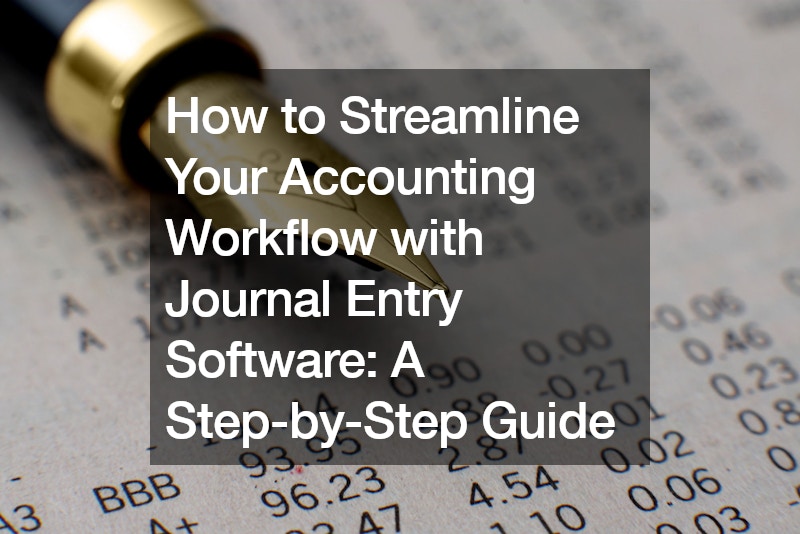In the realm of accounting, efficiency is paramount. From managing payroll to tracking expenses, every aspect of financial management requires precision and accuracy. However, manual entry processes can often be time-consuming and prone to errors. That’s where journal entry software comes into play, offering a streamlined solution to optimize accounting workflows. In this comprehensive guide, we’ll explore how to leverage journal entry software effectively to enhance efficiency in your accounting processes.
Introduction to Journal Entry Software
Journal entry software serves as a digital tool designed to simplify the process of recording financial transactions. By automating repetitive tasks and providing user-friendly interfaces, this software enables accounting professionals to streamline their workflows significantly. Whether you’re a small business owner or a seasoned accountant, integrating journal entry software into your operations can revolutionize how you manage financial data.
Different Methods of Recording Journal Entries
Traditionally, accounting professionals relied on manual methods or Excel templates to record journal entries. While these methods served their purpose, they were often labor-intensive and susceptible to errors. Journal entry software offers a more efficient alternative by automating data entry and ensuring accuracy throughout the process.
Advantages of Using Journal Entry Software
One of the primary advantages of journal entry software is its time-saving benefits. By automating repetitive tasks such as data entry and reconciliation, professionals can allocate their time more effectively to strategic financial analysis and decision-making. Additionally, journal entry software promotes consistency and accuracy by enforcing standardized processes and reducing the risk of human error.
Choosing the Right Journal Entry Software
Selecting the right journal entry software is crucial for maximizing its benefits. When evaluating different options, consider factors such as ease of use, integration capabilities, and scalability. Look for software solutions that align with your organization’s specific needs and objectives, whether you’re a small business looking for a user-friendly solution or a large corporation in need of advanced features.
Step-by-Step Guide to Using Software
Setting Up: Begin by configuring the software to align with your organization’s accounting practices and preferences. Customize settings and permissions to ensure that users have access to the appropriate features and data.
Creating Templates: Develop standardized journal entry templates that reflect common transactions within your organization. These templates should include fields for essential information such as account codes, descriptions, and amounts.
Mapping Accounts: Establish mappings between your accounting software and the journal entry software to facilitate seamless data transfer. Ensure that accounts are accurately mapped to their corresponding categories to maintain consistency and accuracy.
Uploading Entries: Once templates are created and accounts are mapped, begin uploading journal entries into the software. Utilize batch upload features to streamline the process and minimize manual data entry. Review entries for accuracy before finalizing and posting them to your accounting system.
Best Practices for Efficient Management
To maximize the efficiency of your accounting workflow with journal entry software, consider implementing the following best practices:
Data Reconciliation: Regularly reconcile data between your accounting software and journal entry software to ensure consistency and accuracy.
Training and Support: Provide comprehensive training to users to ensure they understand how to effectively utilize the software. Additionally, offer ongoing support to address any questions or issues that may arise.
Continuous Improvement: Continuously evaluate and refine your accounting processes to identify areas for improvement. Solicit feedback from users and stakeholders to inform future enhancements.
Conclusion
In conclusion, journal entry software offers a powerful solution for streamlining accounting workflows and enhancing efficiency. By automating repetitive tasks, promoting accuracy, and providing user-friendly interfaces, this software empowers accounting professionals to focus on strategic financial analysis and decision-making. By following the step-by-step guide outlined in this article and adopting best practices for efficient management, organizations can unlock the full potential of journal entry software to drive success in their financial operations.
.





